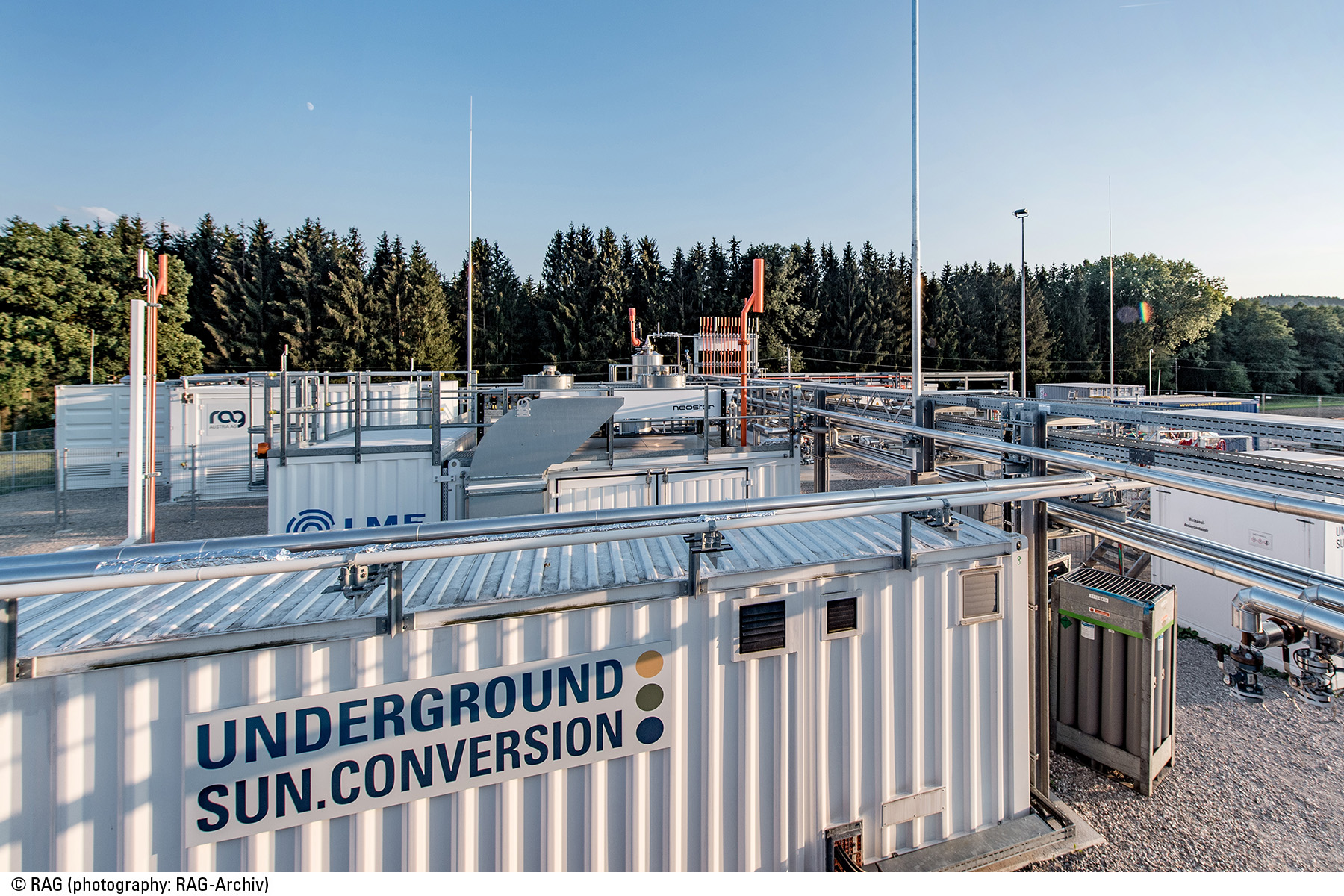
Renewable energy and how to make it available year-round remain one of the big challenges in making energy consumption more sustainable and efficient. This is largely because natural gas continues to be an important energy source, particularly in the heating market.
With the “Underground Sun Conversion” (USC) and “USC – Flexible Storage” research projects, RAG Austria is developing potential ways of tackling both issues. This includes developing seasonal storage of renewable energy as well as optimizing ways of producing natural gas in large quantities.
Natural gas makes up around 23% of energy consumption in Europe. In Germany, it is the second most important energy source. Natural gas can be produced artificially using power-to-gas systems. In a first step, electrical power (e.g., produced by solar and wind power) is converted into hydrogen, most often through electrolysis. Hydrogen is then either used directly or converted into a more commonly used gas, such as natural gas.
Problems with conversion
“Hydrogen has a significantly lower energy density. This means that to store the same amount of energy, I need more storage volume,” says Stephan Bauer, head of Green Gas Technology at RAG Austria. “Another disadvantage is that there is no wide-reaching infrastructure for the use of hydrogen.” In contrast, if hydrogen is converted further to methane, “there’s an additional conversion step, leading to somewhat lower efficiency. But the energy density is much higher. And the perfect infrastructure is already there. It already exists throughout Europe and is compatible with our existing energy system,” explains Bauer.
While synthetic gas production isn’t new, its conversion in reactors has its flaws: Producing synthetic gas requires a lot of renewable energy. As a result, it is more costly than direct electricity use. However, for a stable supply through all seasons, it might be the only solution. Another significant aspect is that, as Bauer points out, “They simply lack the volume.”
Millions of years old
”While investigating their trial facility in Austria, researchers found microbes that are known to be involved in producing natural gas. By adding CO2 and sustainably produced hydrogen, a process that first produced methane millions of years ago has once more been set in motion.”
Underground Sun Conversion is a technology developed by RAG Austria in collaboration with the University of Natural Resources and Applied Life Sciences in Vienna, Austria. As a result of this research, natural gas production – methanization – can be naturally kickstarted again in depleted sandstone gas reservoirs.
This means that natural gas could be produced in significantly larger quantities than before. “In our storage facilities – even a small test facility – we have a volume of more than one million cubic meters. “In total, there are more than six billion cubic meters in Austria,” says Bauer. “I can’t get reactors that big on the surface.”
Whether conversion in other sandstone reservoirs works around the world depends on whether the necessary microbes are present. “There are natural gas deposits where the gas was produced by a thermal rather than a microbiological process. It can be assumed that the transformation works less well there,” Bauer explains. “But I would not yet want to claim that it has to be sandstone reservoirs. Our reservoirs have proven to be suitable, but we can’t assume all deposits are suitable. That certainly has to be analyzed accordingly.”
Seasonal energy storage
Initial tests show that conversion could happen in a matter of weeks. “We are still looking at the conversion rates and how to boost them,” says Bauer. “But the question is whether this time factor is really relevant. Because it’s not just about conversion, but also about the energy storage aspect and seasonal storage specifically. That would mean that if gases are stored in the summer and have to be available in the winter, they can be given a certain amount of time to convert.”
After USC’s conclusion in late 2020, RAG Austria together with its partners started its second project: “USC – Flexible Storage.” This focuses more on storing energy long-term to ensure a continuous energy supply even during colder and darker months.
“There’s a surplus of renewable energies, such as sun or wind, during the summer,” states Bauer. This changes once the days get shorter and colder and more energy is required to heat and light households. “The availability of renewable energy sources is not the same, but the demand is significantly higher. We have to be able to satisfy this energy storage demand.”
Substantial amounts of energy
To counteract this, the company now focuses on storing energy in an efficient way. “Gas – green, natural gas, hydrogen – is just a storable energy carrier. I can’t store electricity as such. In the short term, I can do this with batteries. But substantial amounts of energy can only be stored materially through storable energy carriers,” according to Bauer.
To guarantee a sufficient supply year-round in the future, sustainable energy sources (e.g., solar or wind plants) will have to be increased and optimized. “There are so many things that have to be verified and researched. We assume that many other players are doing their homework there. The European Commission is also making a great effort to ensure that the relevant infrastructure continues to be developed,” says Bauer.
“We as RAG Austria want to further develop our storage facilities and make them ready for the future to serve renewable energy systems,” says Bauer.
Read also: Shafts and gravity are game-changers in energy storage

